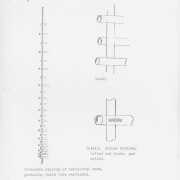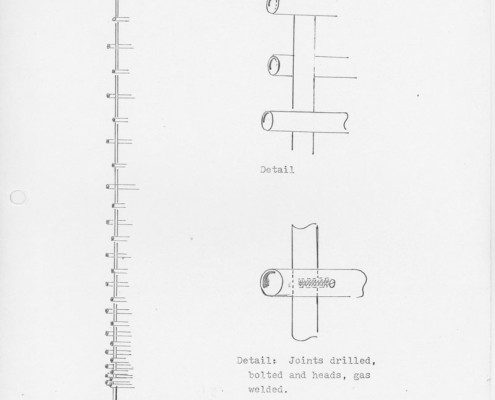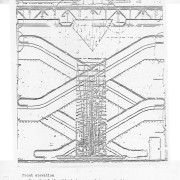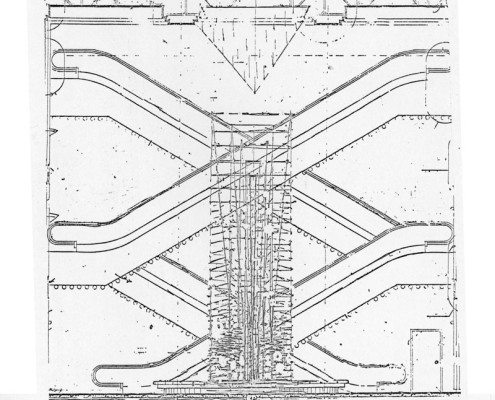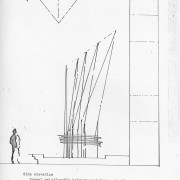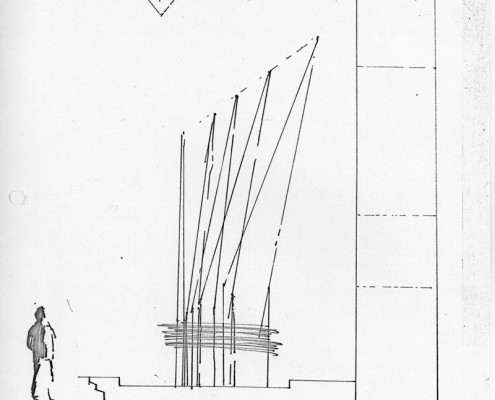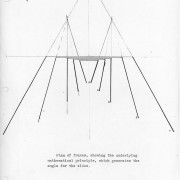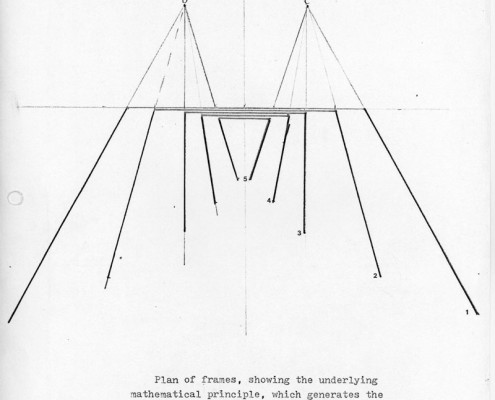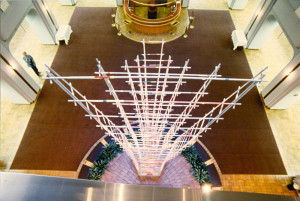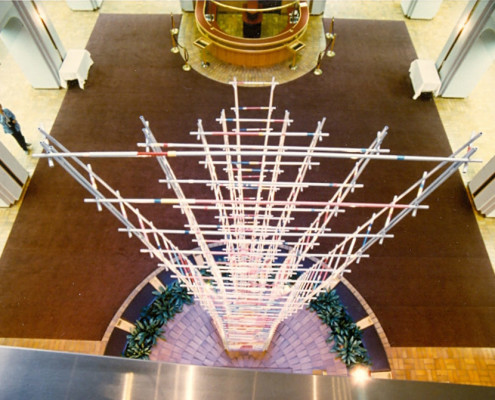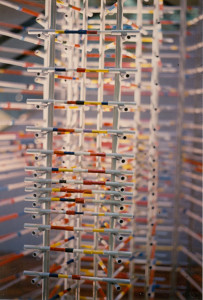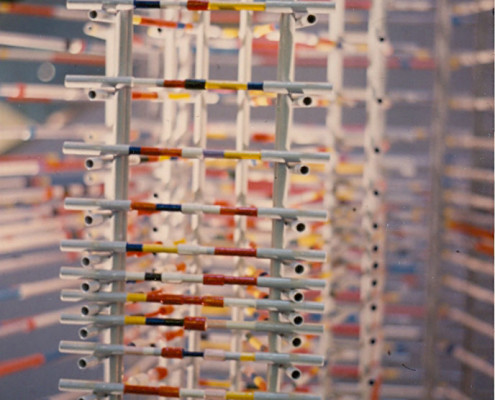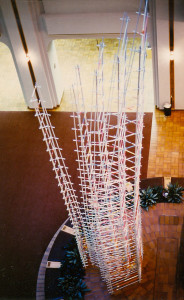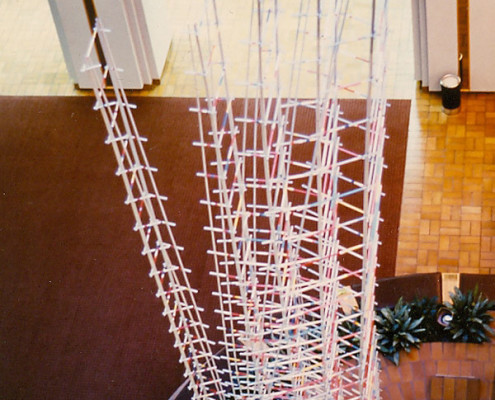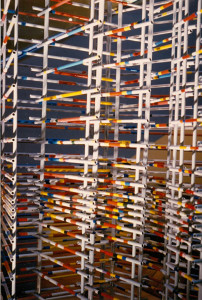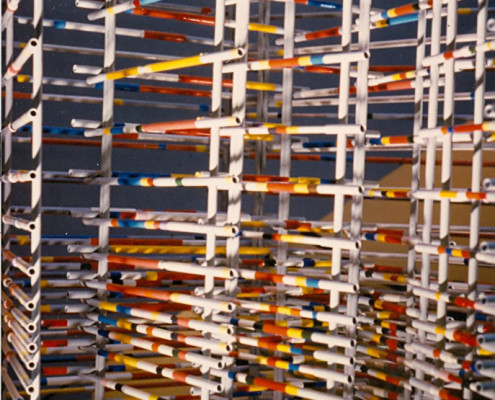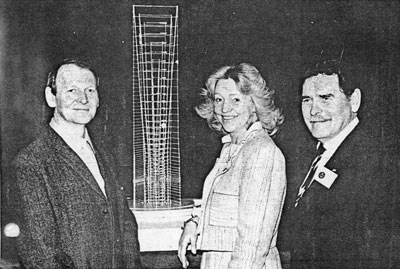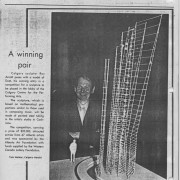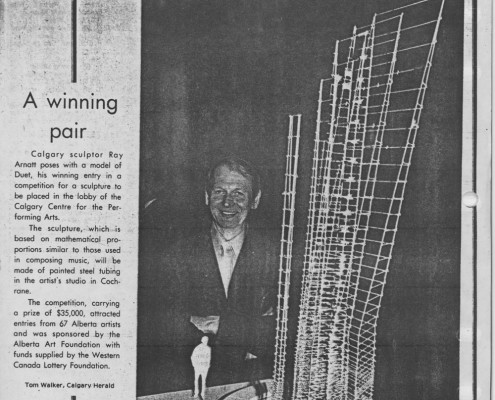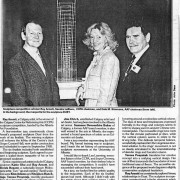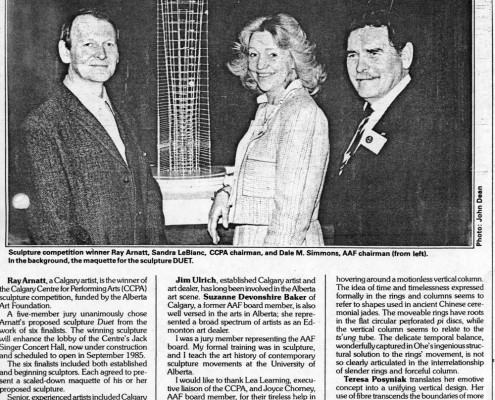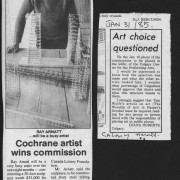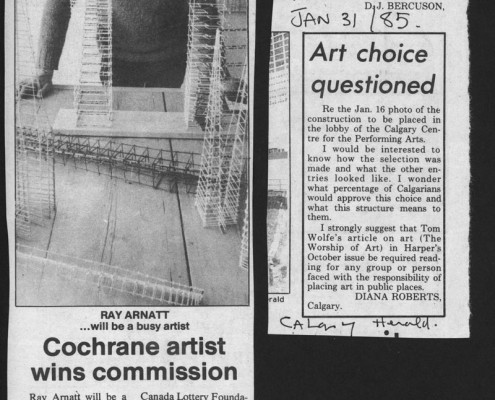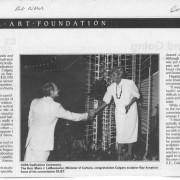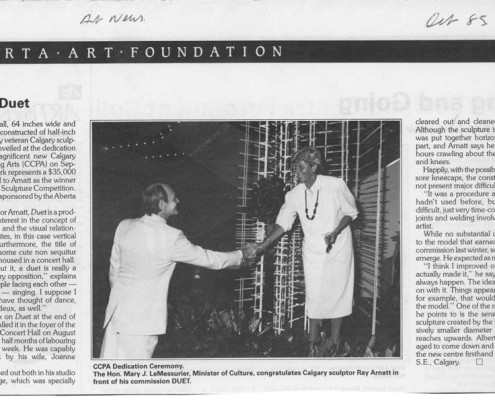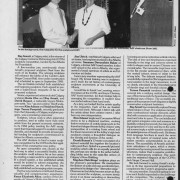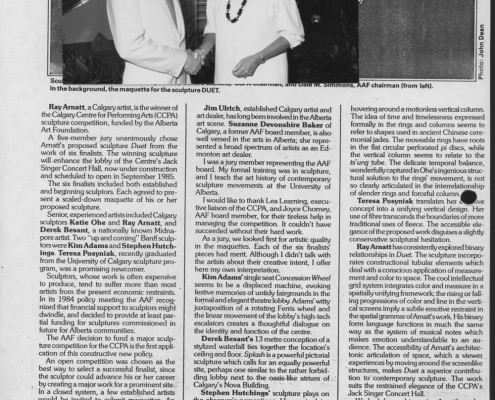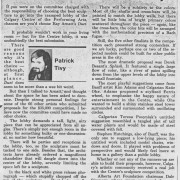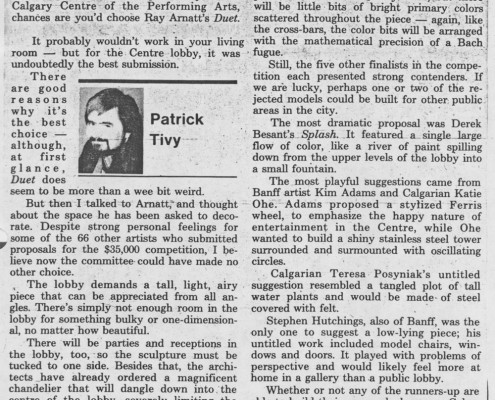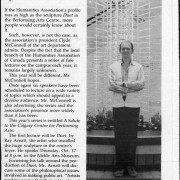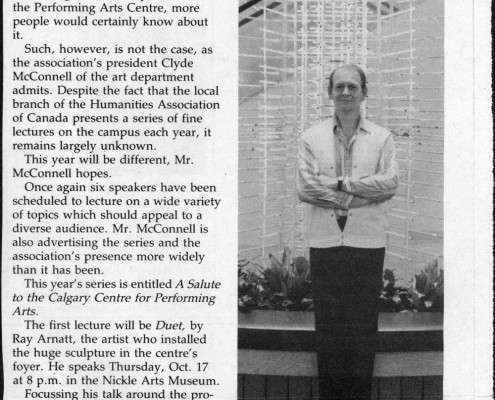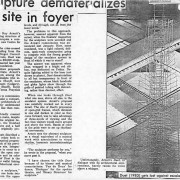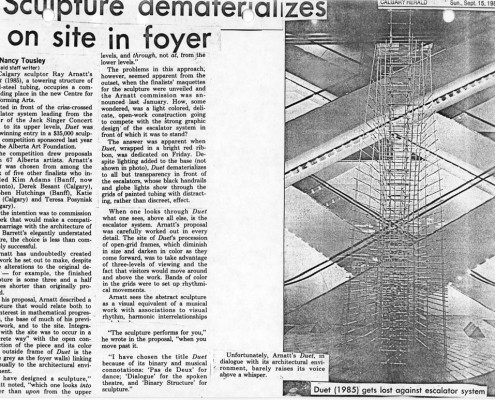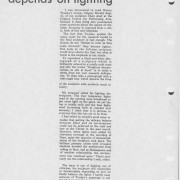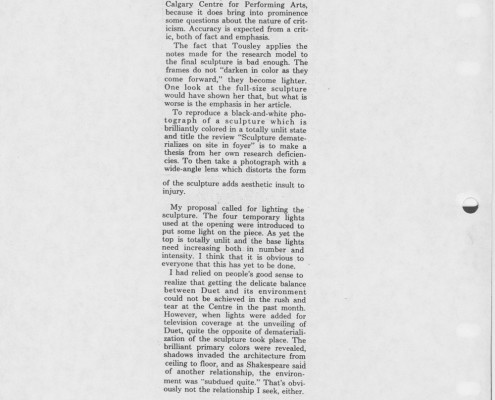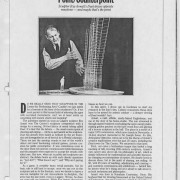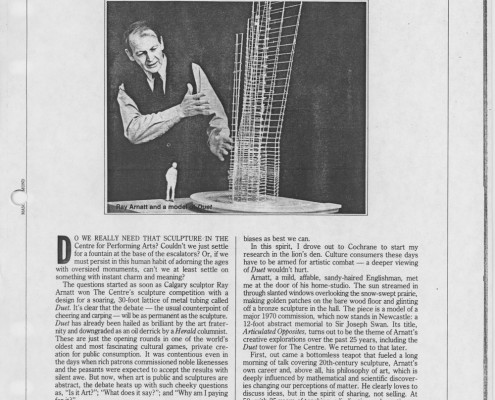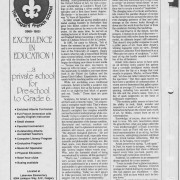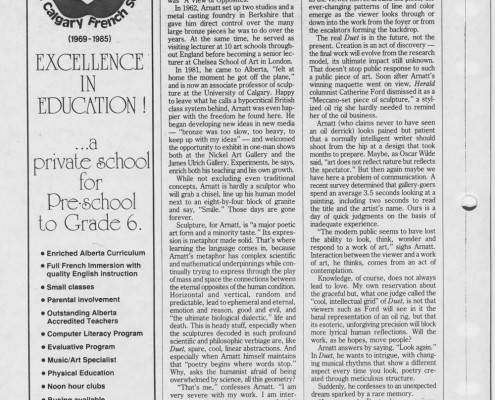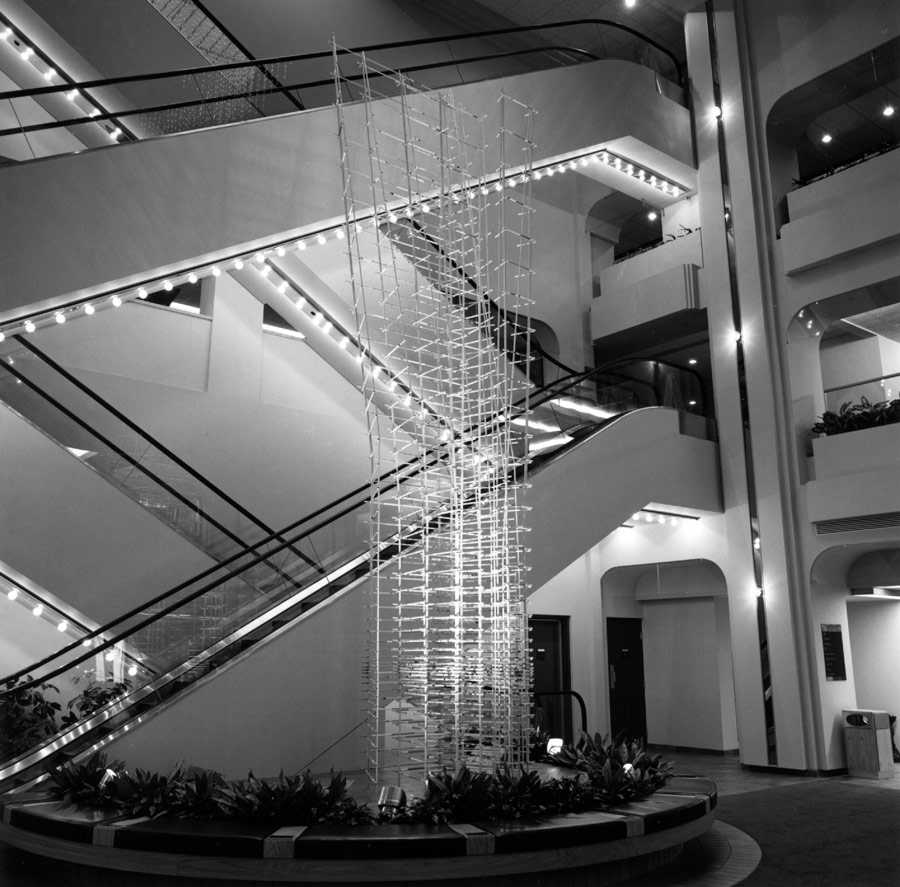
DUET by Raymond Arnatt,
Commissioned Sculpture for the Centre for the Performing Arts (now called Art Commons)
Calgary, Alberta.
Please note: Duet has since been decommissioned and is currently available for lease/purchase.
Please contact us for more information.
Specifications.
Title: Duet
Size: 30′ x 7’6 x 8′
Material: Mild Steel 3/8″ or 1/2″ tube.
Finish: Metal sprayed and enamel paint.
Weight: 3/8’00. .035 wall 260 lbs.
1/2 on. .035 wall 360 lbs.
Construction: Sculpture made in 10′ sections and erected on site.
Scale of Maquette: 1’10.
Notes from the artist:
Concepts.
In developing the sculpture to this stage, I worked on six related models, four of which are presented in this submission. The first two models deal with the idea of horizontal “frames”, in a mathematical progression, which are unrelated to the site. These are the base of my personal interests. The second two maquettes, deal with an extension of the original idea related directly to the specific environment, (drawings 2 and 3 show the basic formal relationship of the sculpture to the site). My aim is to integrate my original concept in a “discrete” way. I have done this in two ways. The openness of the structure allows the architectural details of the environment to exist and relate to the details within the sculpture, and secondly, the base colour of the outside frame will be the exact colour grey of the surrounding walls. These two factors will link the sculpture with its environment and draw the environment into the sculpture. The successively smaller frames are painted with progressively darker greys, and this with the tighter intervals within the frames gives the core of the sculpture an intense, independent quality. The most concentrated aspect in the sculpture takes place at eye level.
Site.
The site provides the spectator with three basic levels of viewing, plus one very oblique view from the escalator I wanted to take full advantage of the particular relationship between site, spectator, and sculpture; and I have designed a sculpture which one looks into rather than upon from the upper levels, and through, not at from the lower levels.
The whole act of perambulation is a very important factor because it opens up the kinetic aspects within the basic form of the work. The visual effect of parallax between the five frames produces forms and relationships in continual motion. A slow passing movement either vertically or horizontally past the model will give some idea of the kinetic qualities of the full size sculpture which will be experienced by someone walking past it or moving by it on the escalator.
Title.
The movement which is generated visually within the sculpture by the perambulation of the spectator, makes a direct connection with the function of the building, and in a sense, the sculpture performs for you by moving past it. The sculpture is a visual equivalent to a musical work, and associations with visual rhythm, harmonic interrelations, chords, complex permutations, and incidental elements are the priority values in the sculpture. I have chosen the title “Duet” because of its binary and musical connotations: “Pas de deux”, for dance; “Dialogue”, for the spoken theatre; and “Binary Structure”, from sculpture. Binary interactions are stressed throughout the work: Vertical with horizontal elements, spatial interval with solid event, minute incident with strong recurring rhythms. The section of the frames are generated from two centres and their interactions produce a radiating plan, (see drawing 4), and of course, the relationship between the sculptures independence as a separate object, and its integration with its context.
Colour and smaller elements.
The colour and smaller elements play a subsidiary, but very necessary role within the sculpture. The disposition of the colour and the variety of rhythms, which can be achieved by varying the length of the bands and their arrangements, has to be explored further. In the maquette, I have used the primary colours plus the secondary mixes, and black and white.
The emphasis is between the relationship between red and white. I have used one yellow band on each of the horizontal bars, on all five frames. Blue and pink have been used sparsely, and at random. Green, very sparingly. Purple is used as a linear trace on either side of the verticals. Only two bands of black appear in the entire structure. The small elements, and the colour, add a depth to the level of relationships within the sculpture, the subtleties of which, can only be realized with a long term viewing of the work, something which can be achieved with a sculpture in a public space.
Base.
I have modified the internal arrangement of the base. The sculpture would be presented as a solid stage-like base with a horseshoe shape. This solution eliminates any possibility of reflecting the underside of the escalators. An alternative base which I have strongly considered is a semicircular, reflecting pool. This pool would start h’ from the base of the escalator so that the reflection of the underside of the escalator would be reduced. This pool adds another binary aspect by repeating the image of the sculpture, though it may present some technical problems,(see drawing 5).
Lighting.
The sculpture would be simply lit. The general lighting is good, and lighting for the sculpture would be designed to complement it. I envisage that the sculpture would be lit from below by spot lights around the edge of the pool, (see drawing 5).

